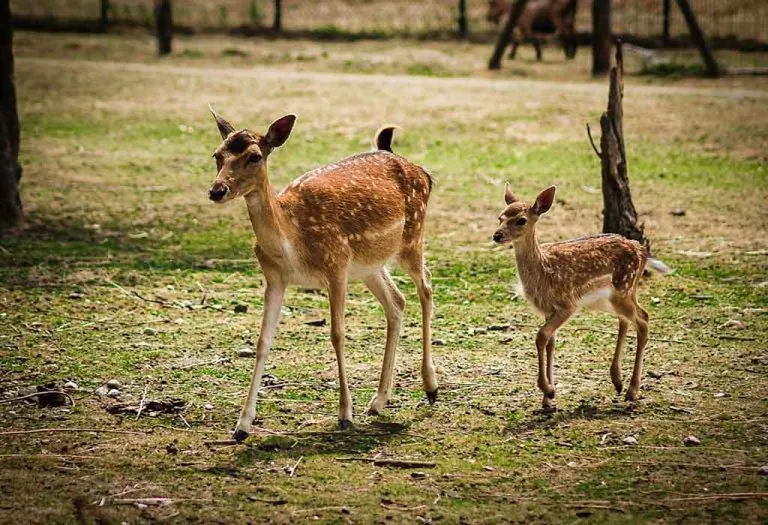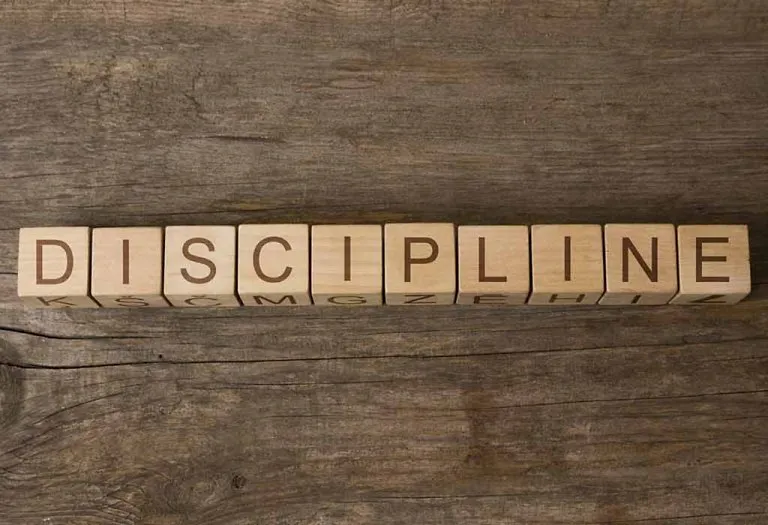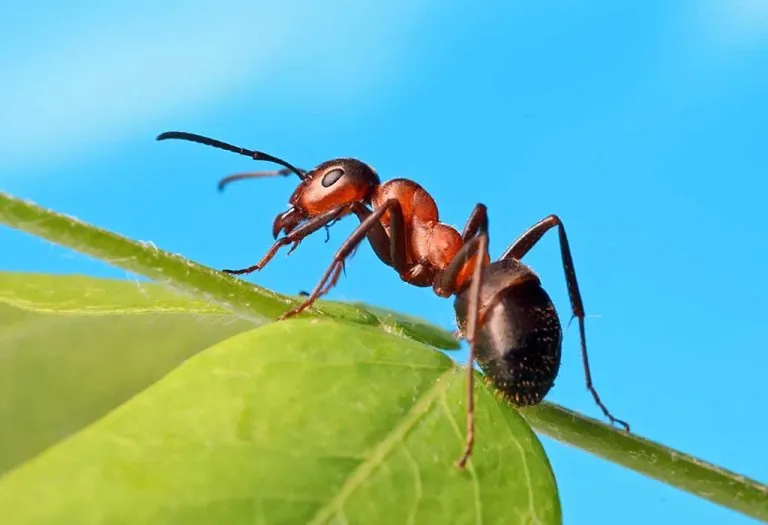Interesting Facts About Deer: Types, Characteristics, Species & More
- What Is a Deer Called?
- What Are the Different Types of Deer?
- What Does a Deer Look Like & Its Behaviour?
- Where Do They Live?
- What Do Deer Eat?
- What Hunts Deer?
- How Do Deer Stay Safe?
- How Do Deer Survive in Their Habitat?
- How Long Do Deer Live?
- Are Deer at Risk of Extinction?
- Other Interesting Deer Facts and Information for Kids
- FAQs
Have you ever seen a deer? These calm and beautiful animals are known for their shyness and hippity-hop! Deer are very beautiful creatures, and many kids have heard about them in children’s stories. Because deer are cute and calm and eat grass, they are every kid’s favourite. Several children’s stories and lullabies have deer, most probably as children’s best friends. Deer live in grasslands, woodlands, and savannas, with plenty of grass to graze. With a slender body, sharp eyes, and always-on-alert behaviour, deer are among the fastest runners in the wild. Are you curious to learn more about deer facts and their fascinating lives? If yes, hop on and get ready, as this article on deer facts for kids will be a fascinating read for you.
What Is a Deer Called?
Deer are thin, long-legged animals that mainly feed on grass and plants. They are calm and gentle animals that are nice and often seen leaping casually through long grass.
Some quick facts about deer are:
- Similar to cows, deer have four-chambered stomachs.
- Deer have an exceptional sense of smell and good speed with excellent dodging skills. They frequently lick their nose to keep it moist.
- Male deer have antlers, which they use for their protection against predators.
- Deer do not have gallbladders.
- Deer meat is considered highly nutritious by many communities.
What Are the Different Types of Deer?
There are several types of deer that populate forests, grasslands, and urban areas. Here are the ten most popular types of deer found around the world:
- White-tailed Deer: This deer species is commonly recognised by its whitetails and is usually found in North America. You can find them in several different habitats, like forests, grasslands, and urban areas.
- Red Deer: Red deer are a popular species because of their red coats and magnificent antlers. They can be found in Asia, Europe, and North Africa.
- Elk: Elk constitute the largest species of deer and are commonly found in large parts of Asia and North America. Boasting magnificent and large antlers, they are spotted, usually in forests and grasslands.
- Reindeer: This is a special kind of deer species populated in the Arctic and subarctic regions. Christmas is synonymous with Reindeer. They migrate for food and survive well in colder regions.
- Roe Deer: This deer species is found in several parts of Asia and Europe. The speciality of Roe deer is that they are smaller in size and agile. They also have a unique “barking” call.
- Chital: Chital deer are popularly referred to as spotted deer. Their coats have white sports, and they live in grasslands and forests. Chital population is commonly found in India and Sri Lanka.
- Sika Deer: Boasting a camouflage skill because of their smaller height and spotted coat, Sika deer are magnificent creatures. They are mostly populated in East Asian countries, including China, Japan, North Korea, and South Korea.
- Sambar Deer: This species of deer inhabits India and Southeast Asian countries. Sambal deer are larger in size and are commonly found near water sources in dense forests.
- Muntjac: Populated in Asia and Europe, Muntjacs are known for their small sizes, which make them look more similar to wild boars than deer species. Because of their remarkable vocalisation, they are also called barking deer.
- Water Deer: As the name suggests, water deer live close to wetlands and grasslands. They are populated in East Asia, including China, South Korea, and North Korea. Water deer are small in size and don’t boast antlers.
What Does a Deer Look Like & Its Behaviour?
Deer appear thin and long-legged, with colouration ranging from light brown with cream-coloured undersides to brownish-red to greyish-brown. They typically range from 30 to 1500 lbs in weight, depending on the species. Reindeer weigh roughly 375 lbs, red deer weigh approximately 430 lbs, and roe deer weigh about 50 lbs. Among the deer family, Moose are the largest, strongest, and weigh the most, roughly about 1500 lbs.
Male deer grow antlers, whereas female deer don’t. This is one of the most magnificent features among deer, distinguishing males from females and providing an aesthetic look to males.
Deer also range in size from small to large. The white-tailed deer measures roughly 4 to 7 feet long from nose to tail and is about three feet in height at the shoulder.
Behaviour-wise, deer are shy and rather timid animals. They are constantly in danger from their carnivorous predators, so they always stay alert while doing their routine tasks.
Where Do They Live?
Deer primarily live in tall prairie grass and forests, and in cold winters, you can find them in thick forests where big, strong trees protect them from strong winds and snow. Asia’s biggest deer population can be found in the Gangetic Plain Regions in Northern and Southern India and several regions of Nepal. You may see chital, Indian sambar, and hog deer in those regions. North and South America also have a good deer population.
What Do Deer Eat?
Deer are herbivorous animals, which means they consume only plants, grass, and other vegetation. Opposite to picky eaters, they snack on all kinds of plants, leaves, grass, shoots of trees, buds, twigs, and flowering plants. They also eat fruits, nuts, berries, flowers, and fungi like mushrooms. Deer population inhabiting close to urban areas or crop fields also feast on crops like corn, soybeans, and other crop grains.
What Hunts Deer?
There are several natural predators of deer in nature that hunt them for their meat, skin, antlers, and more. Wolves, cougars, coyotes, bobcats, cheetahs, tigers, and bears commonly hunt deer. Large birds of prey like hawks and eagles usually take away fawns when they are alone and vulnerable. Humans, too, hunt deer for their hunting sport, meat, and their antlers.
How Do Deer Stay Safe?
Deer are shy yet always on alert animals. They are known to react swiftly to sudden movements or sounds and flee the scene when alerted to the danger. They often choose large open spaces to get a better understanding of the danger. With eyes on either side of the head, they benefit from a wide-angle vision. They have outstanding night vision, which helps them see and assess their predators in the dark.
How Do Deer Survive in Their Habitat?
Deer mainly live in small groups, which is termed a herd. Males, on the other hand, prefer to live alone. With usually 25 deer in a single herd, there’s a dominant male deer, commonly known as a stag, and a majority of the deer in a herd are female and young deer. Deer also don’t make any nests or dens, so they prefer safe spots to rest, typically under low-hanging trees.
When the herd moves ahead, a female deer takes the lead in the front while the dominant male deer stays towards the back of the herd.
To stay safe and survive in the wild against predators, deer use different communication methods, such as visual, vocal, and chemical communication. They even produce a significant scent from their bodies that helps provide information about their social position, sex, health, physique, and most importantly, any danger in the area.
How Long Do Deer Live?
The average lifespan of a deer varies with the type of species, environmental conditions, human impact on their habitat, and predators. The following are the average life spans of different deer species:
1. White-tailed Deer
The average life span of white-tailed deer is around four to five years. Some deer of this species can live up to 10 years if the environmental conditions of their habitat are suitable, saturated with food and have a few predators.
2. Red Deer
Red deer can live between 10 to 15 years in the wild, which can extend if they live in captivity or protected environments. In the latter cases, they can live up to 20 years.
3. Reindeer
Reindeer are known to live for about 10 to 15 years in the wild with suitable environmental conditions.
4. Elk
Elk can live up to 12 years in the wild. Their life span could extend if they live in protected environments.
Are Deer at Risk of Extinction?
Several deer species are considered endangered. Their conservation status depends on the species as well as their environmental conditions. Some deer species are largely populated, some are in a stable count, and some are in the endangered or vulnerable category.
Endangered Deer Species
- Sokoke Simian Blue, commonly found in Kenya, are considered extremely endangered due to its habitat loss by largely human intervention and fragmentation.
- Pampas Deer have been added to the endangered species list due to excessive hunting and habitat loss. They are commonly found in South America.
Vulnerable or Near Threatened
- Bactrian Deer are well-populated in Central Asian countries, including northwest Kyrgyzstan, Afghanistan, and parts of China. They are considered critically endangered due to habitat loss and hunting.
Other Interesting Deer Facts and Information for Kids
If you are still curious to learn more cool facts about deer, then check out the facts about deer information for kids below:
- Though deer adapt very well to a lot of different habitats, they still prefer to live in areas often called the ‘edge’ locations. These locations are usually wooded areas with enough food and grazing. A group of deer living in a location is called a herd.
- The male deer are called bucks, while the females are called does. The male deer grows antlers, which fall off during the winter. Many deer species are hunted for their antlers. The females do not have antlers.
- The baby deer is called a ‘fawn’. They are born with a spotted colouring on their skin, which allows them to be camouflaged when in the grass. Within a year after their birth, they usually lose the spotted colouring. Within thirty minutes after they are born, the fawn takes its first steps.
- The deer usually weigh from 30 to 300 kg, based on their species. Northern Pusu is the smallest type of deer, and the average weight of this species is 10 kg. Moose is the largest deer, and it weighs around 431 kg.
- The physical spots, stripes, and markings are completely dependent on the type of deer species. Most of the deer species are brown in colour, and some of them have marks on their body.
- Deer are good swimmers. They also have great hearing and an amazing sense of smell. They do not have great eyesight, and some are even believed to be colour-blind. They see the world in a very low resolution.
- Antelopes are animals that look a lot like deer, but they have horns instead of antlers. These horns are permanent and will not grow back every year like the antlers. But the antlers grow into many extensions known as ‘points’. These antlers are used by the males to fight and get attention from the females.
- Deer are extensively distributed on every continent except Antarctica and Australia. Africa hosts only one species of deer, which is the Red Deer, and it lives in the Atlas Mountains.
- A few deer species have meat in their diet, although all deer species are herbivorous. Many deer species are picky feeders, and they are known to be absolute browsers. They largely graze on grasses for a few hours.
- If there is no danger, then they spend hours on the grass. They have specialised teeth that make them good at feeding on fresh grasses, leaves, fruit, fungi, and lichens.
- Every species of deer is different in its own way. For example, the white-tailed deer has a sequence of tines from a forward-curving core beam developing upwards. This whitetail deer can even jump a distance of 15 feet. This is one of the most interesting white-tailed deer facts for kids.
- The largest deer population in Asia are found in the Northern and Southern India’s Gangetic Plain Regions and Nepal. These types of fertile plains consist of moist forests and dry deciduous forests that are home to the Indian sambar, hog deer, chital, Indian muntjac, and barasingha. This is a very interesting deer habitat fact.
- Certain species are restricted to grasslands, wet savannas, mountains, swamps, and riparian corridors. These mammals are experts in these types of areas.
- They do not build nests or dens. They find a comfortable and safe place to rest, mostly under low-hanging branches of trees. They mostly stay close to places where food is easily available.
- They do not store food for winter. They use their hooves to uncover leaves and moss when the snow is not deep. When it is deep, they eat branches and twigs.
FAQs
1. What is the baby of a deer called?
A baby deer or a young deer is referred to as a fawn. Fawns are typically born in the spring season and are very dependent on their mother for nutrition and protection during the first few months of their life. Their small size helps them camouflage well in grass.
2. Can deer swim?
Yes, deer are fantastic swimmers. They can cross streams and other water bodies to protect themselves.
3. What type of deer is mainly found in India?
A total of nine species are in India, including Sambar deer, Barking deer, Himalayan musk deer, Kashmiri red deer, Spotted deer, and Mouse deer.
During the summers, they live in fields or woodlands, and in winters they move to the forest to protect themselves from the cold. If people destroy forests to build houses, then deer will have nowhere to go. They will start coming into the parks or even your backyards.
Also Read:
Fun Facts About Horses for Kids
Fascinating Wolf Facts for Kids
Horse Facts and Information for Kids
Interesting Tiger Facts & Information for Children
Was This Article Helpful?
Parenting is a huge responsibility, for you as a caregiver, but also for us as a parenting content platform. We understand that and take our responsibility of creating credible content seriously. FirstCry Parenting articles are written and published only after extensive research using factually sound references to deliver quality content that is accurate, validated by experts, and completely reliable. To understand how we go about creating content that is credible, read our editorial policy here.























